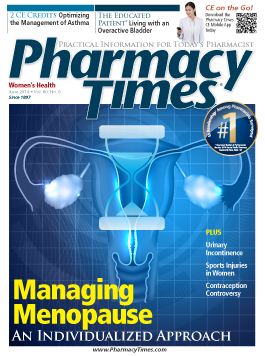Mix-ups Between Risperidone and Ropinirole
Over the years, The Institute for Safe Medication Practices (ISMP) has received a number of reports about mix-ups between risperiDONE (RISPERDAL) and rOPINIRole (REQUIP). In one of the first event reports submitted to ISMP, the caregiver of a new patient, who was changing pharmacies, requested that the pharmacist obtain copies of prescriptions from another local pharmacy. The pharmacist called the other pharmacy and received the verbal prescription transfers. One of the prescriptions received by the pharmacist was for the anti-Parkinson’s drug rOPINIRole 2 mg. At the point of sale, while counseling the patient and the caregiver, it was discovered that the prescription was incorrect. The prescription was reverified with the other pharmacy to be for the antipsychotic risperiDONE 2 mg. The medication was changed before it was dispensed to the patient.
In a subsequent case, a patient experienced nausea and an unexpected sedative effect after taking what was thought to be 6 mg (2 × 3-mg tablets) of risperiDONE. The patient noticed that the tablets looked different from previous prescriptions for the same medication and returned the medication to the pharmacy. Apparently, rOPINIRole 3-mg tablets had been dispensed in error. As in earlier cases, the products were from the same manufacturer in bottles with the same shape and similar printing.
The FDA alerted the public to this name pair in 2011 (www.fda.gov/Drugs/DrugSafety/ucm258805.htm) after ISMP and FDA received more than 200 reports of medication errors, some of which involved patients who required hospitalization. A number of factors may contribute to these medication errors, including (1) similarities between the brand and generic names (eg, risperiDONE and rOPINIRole can sound alike when spoken, both start with the letter “r,” both have the same number of syllables); (2) similarities between the container labels and carton packaging, particularly when both products are from the same manufacturer; (3) illegible handwriting on prescriptions; (4) overlapping product characteristics, such as the dosage strengths (0.25, 0.5, 1, 2, 3, and 4 mg), dosage forms, and dosing frequency; (5) appearance of the names next to one another in computer listings; and (6) storage of these products near one another on pharmacy shelves.
As part of its 2011 alert, the FDA requested manufacturers of both brand and generic formulations of these drugs to use tall-man lettering (ie, rOPINIRole and risperiDONE) on container and carton packaging. Additionally, manufacturers were asked to change individual labels and carton packaging to provide better visual differentiation between the generic products. However, despite these changes and alerts from the FDA and ISMP, mix-ups between these products continue to occur. Health care practitioners should consider the following to reduce the potential for confusion between these products:
- When either drug is prescribed, print the drug name and include the purpose of the drug on the prescription. • Spell out the medication name when placing telephone and voicemail orders.
- When new phone prescriptions or transfers of prescriptions are accepted, require staff to write down the prescription and then perform a read back (and spell back for drugs that are known to cause confusion) of the medication name, strength, dose, and frequency of administration.
- Use tall-man letters for storage labeling and computer listings.
- Physically separate the stocks of these 2 drugs on the shelf or wherever they are stored.
- Implement barcode scanning during the production stage of the dispensing process to help identify when the wrong product is selected from the shelf.
- Assign time to provide counseling to patients and caregivers, especially for new prescriptions and those transferred from other pharmacies.
Dr. Gaunt is a medication safety analyst and the editor of ISMP Medication Safety Alert! Community/Ambulatory Care Edition.

